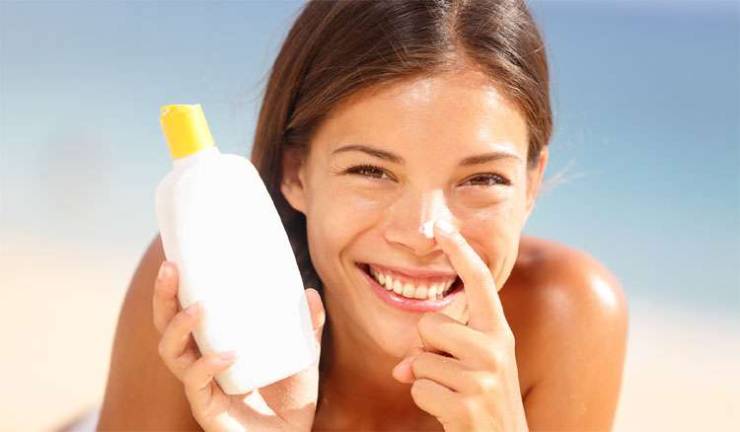Be safe in the sun

Teens love to hang out at the beach or by the pool to beat the summer sizzle. And when “cool” is defined by a glowing tan, the tanning bed is an alluring destination, too. Most young people don’t think much about the dangerous effects of the sun and artificial ultraviolent (UV) light, but sun safety early in life is crucial to preventing skin cancer in adulthood.
Teens say they don’t like using sunblock, complaining it is greasy, sticky and inconvenient.
“A variety of reasons are at play in creating a barrier to teen sun protection,” says Victoria Sharon, UC Davis assistant professor of dermatology. “The immediate gratification of a tan may surpass the delayed gratification of skin cancer protection. Also, many teens feel invincible, and do not perceive that they are at risk for skin cancer.”
'Safe' tanning? No such thingSPF of at least 30 should be applied year-round, including cloudy days.
Excessive exposure to natural sunlight or artificial UV light (tanning beds or UV lamps) early in life significantly increases the risk for skin cancer, the most common cancer in the U.S. Five or more blistering sunburns before age 20 may increase the risk of melanoma by 80 percent, according to the American Association for Cancer Research. One in five Americans will be diagnosed with skin cancer in their lifetime. Melanoma, the most aggressive type of skin cancer, is one of the most commonly diagnosed cancers among adolescents and young adults. Yet the message does not seem to get through, as nearly two-thirds of high school students report having been sunburned at least once.
Studies supported by the U.S. Centers for Disease Control and Prevention have consistently shown that indoor tanning — using a tanning bed, booth or sunlamp to achieve a tan — increases the chances of getting skin cancer just as much as natural sun exposure does because it delivers high levels of UV radiation in a short time. It also increases the risk of eye cancer (ocular melanoma).
Not all sunscreens are created equal
Establishing sun safety habits early in life is crucial to minimizing the risk of skin cancer in the future. Proper use of sunscreen is one of the most important ways to reduce the risk of sun damage and skin cancer. The SPF — or sun protection factor — measures the sunscreen’s ability to prevent damage to the skin from UV rays.
Be sure to protect yourself while in the sun with sunscreen, protective clothing and 100 percent UV-blocking sunglasses.
Proper application of sunscreen is important, too.
While the brand of sunscreen doesn’t matter much, it’s crucial to look at the ingredients.
“Zinc oxide and titanium dioxide are effective immediately when applied on the skin,” Sharon says. “Your sunscreen should contain one of those two ingredients.”
“It must be applied every two hours and reapplied within one hour of exposure to water, toweling or excessive perspiration,” she adds.
The sun’s rays are most harmful from 10 a.m. to 4 p.m. During this period, it’s important to wear sun-protective clothing. UV rays can go through white cotton T-shirts and cause skin damage, especially when the T-shirt is wet. Wearing tightly woven or dark-colored clothing helps block harmful UV rays.
Source: University of California at Davis Health System: ucdmc.ucdavis.edu